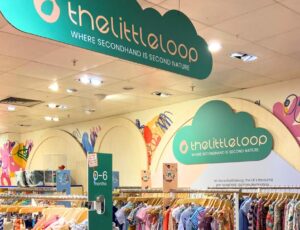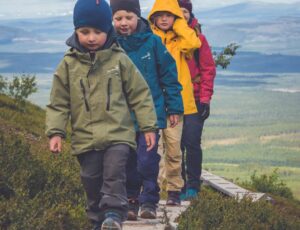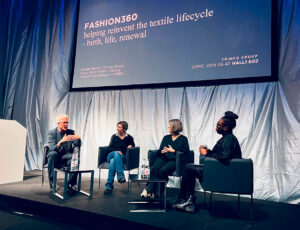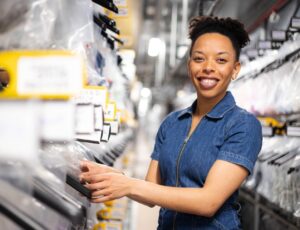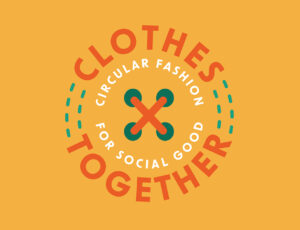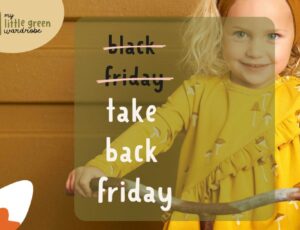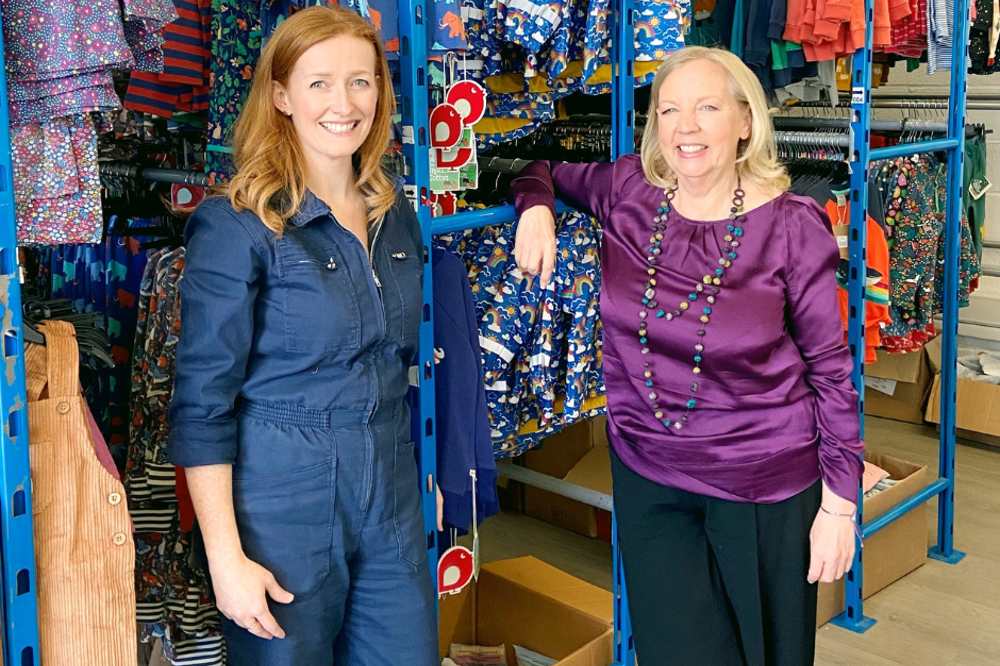
Childrenswear rental and resale platform, thelittleloop, has launched a pioneering take-back service that enables brands to become circular. Named Reloop, the initiative allows brands to passively increase revenues, customer loyalty and market relevance with minimal effort or financial investment, while simultaneously making it easier for parents to keep their children’s clothes in circulation and minimise waste. Company founder, Charlotte Morley, reveals more.
Laura Turner: How has thelittleloop evolved over the years?
Charlotte Morley: I started building thelittleloop five years ago after having my second daughter. I was constantly buying my children new clothes, which they outgrew so quickly, and I wanted to buy organic and ethical brands but couldn’t justify the price. But the biggest problem I found was what to do with all the clothes afterwards. I had always wanted to use my background in consumer technology to build something which might change consumer behaviour for the better, and so I began thinking about the most efficient way to keep quality children’s clothes in circulation as long as possible. The answer was rental, which we launched in 2020.
A year later I was on Dragon’s Den, which was great, but we didn’t see the overnight success that we thought we might. People were saying it was a great idea but weren’t quite sure rental would work for them. That was a bit of a shock. We’d tweaked a lot of things over the years, the business was growing, we were able to get new subscribers and the people who used it loved it, but it was ultimately too expensive to acquire customers. Getting people to try something so different to what they’re used to is really hard without a massive budget behind you. The pivot from rental to resale started then.
We wanted to create something that sells itself better but still had the impact we’d set out to create with rental. We knew parents had to recirculate clothes and that brands wanted a take-back solution, so it felt like the right time to launch a smart secondhand solution that had all the benefits of rental. Something seamless and integrated with the primary shopping journey which is a no-brainer for parents to use, and something that works for brands by allowing them to have a take-back scheme with zero risk of investment.
LT: It sounds like Reloop was a natural progression.
CM: We already had all the ingredients: the technology, knowledge of the market, relationships with brands and an understanding of what parents are looking for. It was just a case of switching direction slightly. We knew from our rental service that good quality clothes don’t die. We’ve got items that have been rented for 1,000 days and are still doing really well. We knew these high-quality items that we deal with could be recirculated not just once but could have four or five lives – if there was a way to keep them in circulation. And that is the core principle of what we’re doing. Making it as easy and rewarding as possible for both parents and brands to keep items being worn.
LT: How does Reloop work for the customer?
CM: If a customer is shopping on one of our brand partner websites they’ll see a take-back price on each garment. This is the price they could get for the item should they choose to trade it back. If a customer purchases a garment, after checkout, they can choose to save it in what we call a digital trade-in closet on thelittleloop. If a customer is shopping with lots of our brand partners, they can save all their purchases in that one ‘closet,’ and they can manually add items from other quality brands with just a couple of clicks. Essentially, we are creating a centralised hub for customers to manage their children’s wardrobes rather than having lots of individual take-back schemes from different brands that are easy to lose track of, or to keep uploading items onto Vinted (with all the hassle). They just log into thelittleloop where they can see all their purchases in one place.
When a customer is ready to trade items in, they simply select the items, hit trade, and we send them a shipping label, which is free for more than 10 items. As soon as we receive a customer’s bag, they receive instant credit; they don’t have to wait for us to sell the items and the credit can be spent on thelittleloop or converted into gift vouchers to spend with our partner brands.
We work with some wonderful brands that are making stunning quality garments, so they are more of an investment, but if you can tell the customer they’re going to get something back at the point at which they buy it, they’re more likely to make that investment. From our early testing, people also asked what they could do with other children’s clothes they had, from the high street for instance. For these we have our clear-out scheme, where the customer can order a clear-out pack online, fill it with any clothes, and receive £5 credit per returned bag. We don’t sell these items, we donate them to local baby banks, but it allows customers to literally get rid of all their children’s clean, wearable clothes in one place.
LT: What benefits does Reloop offer to brands?
CM: We’ve applied the same principle to brands as we have parents, which is brands are also very strapped for time and cash these days. For a brand to set up a take-back scheme it would need to have a tech provider, a third-party logistics partner, and someone who can manage it in-house and deal with customers.
To partner with Reloop, all the brand does is plug us into its website – which we do for them. We don’t charge a platform fee or monthly subscription fee; we take the revenue from the sale because we sell the products via our platform and give the brand a guaranteed 10% share. Plus, they see a loyalty benefit from Reloop customers trading their credit for vouchers with their brand. It’s a completely passive income stream, but the brand can still very legitimately broadcast and demonstrate that it’s doing the right thing, without any of the hassle that comes with having to manage a full take-back scheme. The more brands we can get using Reloop, the more incentive it is for parents to use it and other brands to join, and the greater the impact we can collectively have.
LT: Which brands are currently using Reloop?
CM: Our first brands were The QT and Ducky Zebra, we’ve just launched with Little Green Radicals, and we’re due to launch with Roarsome, Kite Clothing, Charley’s Wild World, Spotty Otter and Little Hotdog Watson. Plus, we’re in talks with several other really exciting brands.
LT: What are the criteria brands need to meet for Reloop?
CM: Our preference is for fully sustainable and ethical brands like those with which we’re already partnered. However, there’s also a level of pragmatism to apply to balance those criteria with also having a large impact. Our focus, therefore, is quality together with ethics in the supply chain. While those two things often come with sustainable production, we’re also creating a level of sustainability by giving the clothes a longer life and keeping them in circulation. So, we will work with businesses which aren’t perfect from a fabrication perspective, as long as their garments are high quality and their ethics add up. We’re open to businesses of any size, but for a brand tipping from small to medium, Reloop really works well.
LT: Censuswide recently conducted a survey on your behalf highlighting the evolving needs of parents in dressing their children sustainably. Can you share some findings?
CM: What surprised me in the findings was just how many parents are either considering or buying secondhand. I thought it would be no more than half of parents, but it’s 84%. We also got an updated figure on how many items of unused childrenswear are currently stored in UK homes, and it’s growing, standing at 225 million items. That’s what we’re trying to combat.
LT: Can you tell us more about your new concession at John Lewis’ Oxford Street store?
CM: It’s a 200 sq. ft concession on the kidswear floor selling all of our brands from 0-6 years, both preloved and new. We had a soft launch in August and our main launch on 10 September. It’s a fantastic opportunity for customers to get over the fear of the quality of secondhand and for us to gain feedback and showcase our partner brands.
LT: What is your long-term vision for thelittleloop?
CM: In terms of the impact we can have, we want to make sure that every amazing brand is seeing its clothes worn again and again and is benefiting from that. I would love to extend beyond childrenswear to include womenswear and menswear as well. If in the next few years childrenswear works, we’ve got the brand partners we want and the business is growing, then we can scale it into other verticals. We want to be the default way people reuse their clothes, and we want it to become an integrated part of the shopping journey – not a bolt-on as it is currently.
I’m sure we will evolve, and the model will change. I have no doubt that we will look quite different in five to 10 years. However, the core of it remains, which is keeping clothes in circulation. We want to make secondhand so easy for customers and brands that there’s no reason for it not to happen, just like our new slogan states – ‘Where secondhand is second nature.’
For further information on Reloop, please click here.






